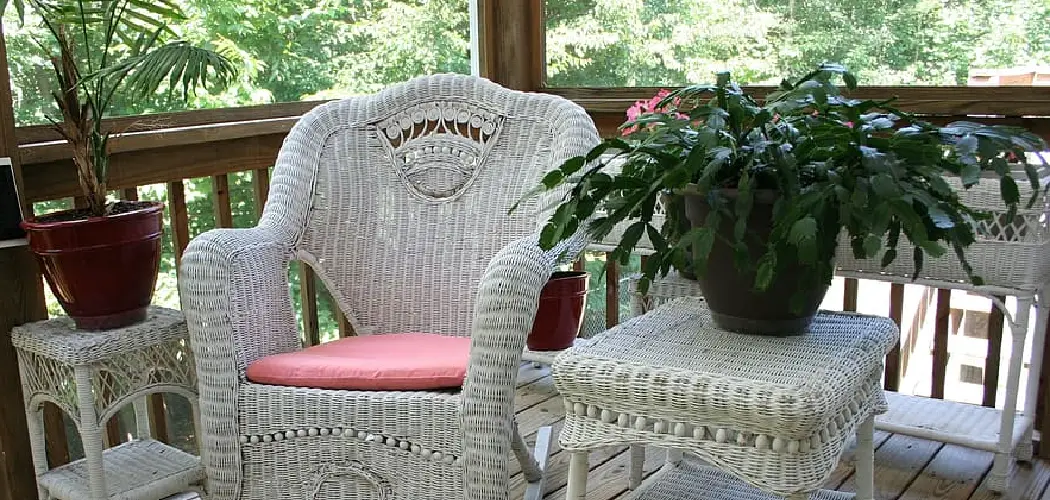While Spring brings welcome warmer weather and longer days, it can also signal a dreary duty that many homeowners dread – deep cleaning all those outdoor furnishings that spent last season tucked away for the winter.
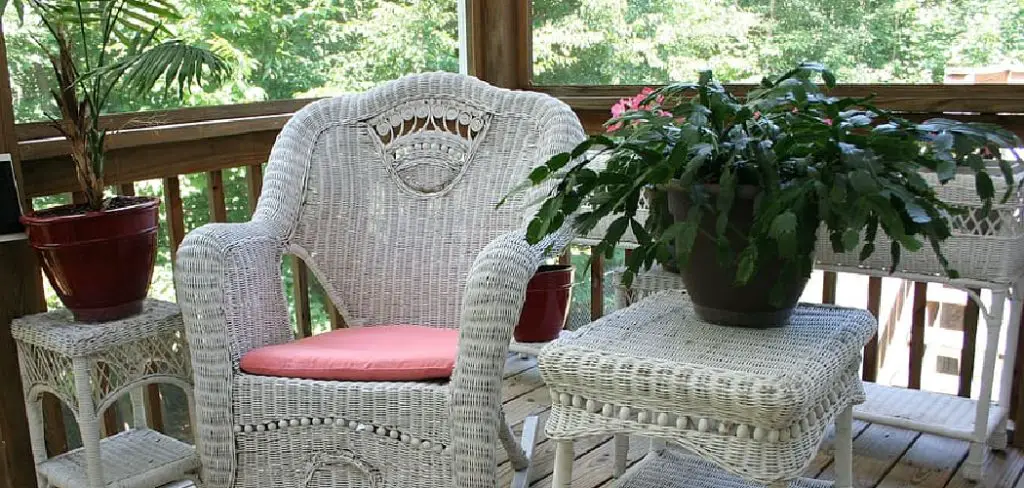
If polyethylene furniture is part of your patio setup, you may have let dirt and grime build up while avoiding the chore of adequately cleaning it. But have no fear! With the proper cleaning techniques and products, you can restore your plastic chairs, loungers, and tables to “like new” conditions without too much hassle.
In this post on how to clean polyethylene furniture, I’ll break down the simple steps to deep clean polyethylene furniture so you can enjoy entertaining outdoors again this season without eyesores of dirty surfaces bringing down the vibe. If you’re ready to tackle this task, let’s get started!
What is Polyethylene Furniture?
Before we dive into the cleaning process, it’s helpful to understand what polyethylene furniture is and why it requires special care.
Polyethylene (PE) is a type of plastic widely used in outdoor furniture due to its durability, resistance to UV rays and water, and low maintenance needs. It’s commonly found in furniture such as chairs, tables, and loungers that are made to withstand outdoor conditions.
While polyethylene furniture is designed to be tough and long-lasting, it can still accumulate dirt, mold, and mildew if not cleaned regularly. This buildup not only makes your furniture look dirty and unappealing but can also cause damage in the long run.
So, how do you effectively clean and maintain your polyethylene furniture? Keep reading to find out!
What Will You Need?
To clean polyethylene furniture, you’ll need a few basic supplies:
- A bucket or large container
- Dish soap or mild detergent
- Soft-bristled brush
- Clean cloths or towels
- Garden hose
Once you have these items ready, you can start the cleaning process.
10 Easy Steps on How to Clean Polyethylene Furniture
Step 1. Dust Regularly
To keep your polyethylene furniture looking its best, it’s important to dust regularly. Use a soft cloth or feather duster to remove dust and dirt from the furniture’s surface. To clean more stubborn dirt or grime, use a damp cloth with mild dish soap. Be sure to avoid using abrasive cleaners, as they can damage the furniture’s surface.
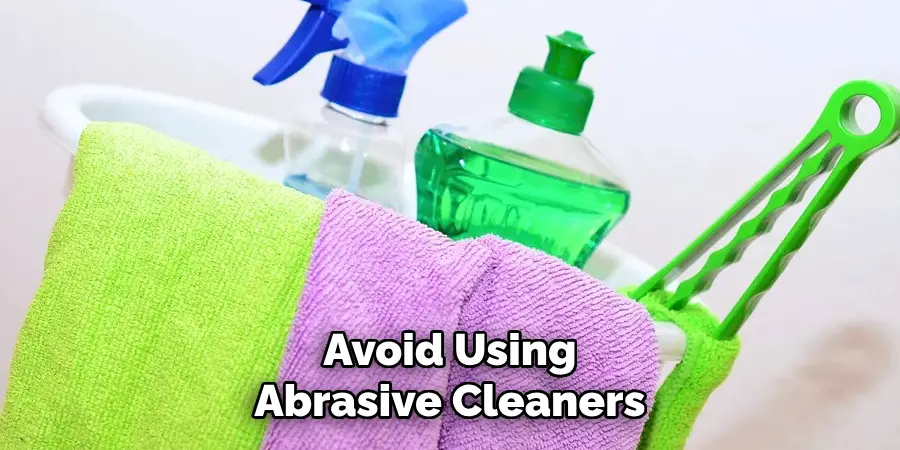
Step 2. Wipe Down with Vinegar
Vinegar is an effective way to clean polyethylene furniture without damaging it. Mix equal parts vinegar and water in a spray bottle and spritz onto the furniture’s surface. Let it sit briefly before wiping it down with a damp cloth. This will help remove any dirt or grime that has built up on the furniture’s surface.
Step 3. Protect from Sun Damage
Polyethylene furniture is susceptible to sun damage, so it’s important to protect it from direct sunlight when possible. If your outdoor polyethylene furniture is exposed to direct sunlight, consider investing in an outdoor cover or umbrella to provide additional UV protection. Additionally, store your polyethylene furniture indoors during cold weather, as extreme temperatures can cause cracking and other damage over time.
Step 4. Rinse Thoroughly
After wiping down your polyethylene furniture with the vinegar solution, thoroughly rinse it. Using a garden hose, rinse off the entire piece of furniture, ensuring you eliminate all the vinegar residue. This step is crucial as any leftover vinegar solution can attract more dirt and grime, leading to more frequent cleanings. Be sure to rinse the furniture from top to bottom, and remember to get into any crevices or hidden areas where dirt might accumulate.
Step 5. Scrub with a Soft-Bristled Brush
You’ll need to consider u for stubborn stains or dirt that didn’t come off during the rinse. Mix some dish soap or mild detergent with warm water in a bucket. Dip the brush in the cleaning solution and gently scrub the stained areas. Be careful not to clean too hard as you could scratch the furniture. Once you’re done scrubbing, rinse the furniture again using the garden hose.
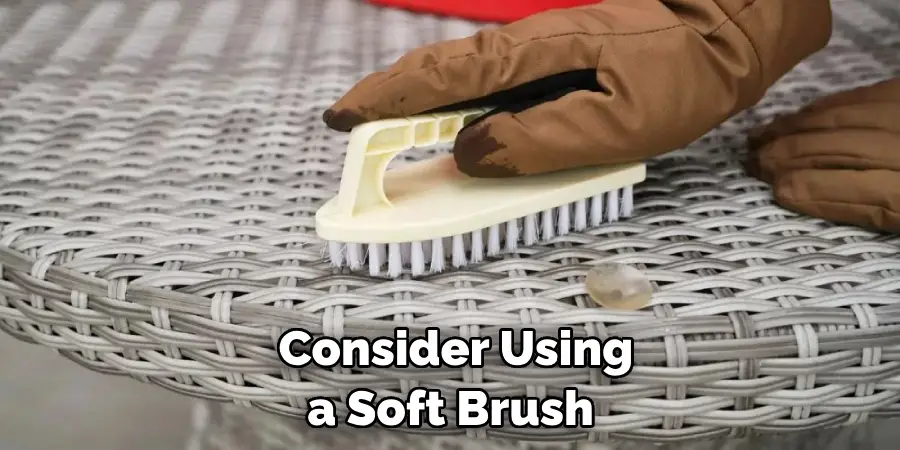
Step 6. Dry Thoroughly
After all the cleaning and rinsing, it’s essential to dry your polyethylene furniture thoroughly. Wipe down the furniture using clean cloths or towels to remove any excess water. Be sure to get into any crevices or hidden areas where water might accumulate. If left to dry naturally, water can leave marks or stains on the furniture. After towel drying, leave the furniture in a sunny or well-ventilated space to allow it to air dry completely. This is especially important to prevent the growth of mold or mildew.
Step 7. Regular Maintenance
Regular maintenance is critical to prolong the life of your polyethylene furniture. Make it a habit to clean your furniture lightly every few weeks, especially during the outdoor season. Doing so can prevent the buildup of dirt, grime, and mildew, making your annual deep clean much easier. Regular maintenance will not only keep your furniture looking its best, but it will also help protect your investment and ensure you can enjoy your outdoor setting for many seasons to come.
Step 8. Apply Protective Spray
After cleaning and drying your furniture, consider applying a protective spray designed for polyethylene furniture. These sprays provide an extra layer of protection against UV rays, dirt, and moisture, further prolonging the life and appearance of your furniture. Follow the instructions on the product’s label, applying evenly across all surfaces of your furniture. Once the protective spray has dried, your polyethylene furniture is ready. Remember to reapply this protective layer as the product’s manufacturer recommends, typically every few months or at the start of the outdoor season.
Step 9. Cover When Not in Use
When your polyethylene furniture is not in use, especially for extended periods, it’s advisable to cover it with a furniture cover. This further protects the furniture from UV rays, dirt, rain, or snow, reducing the frequency of maintenance and cleaning. Choose a cover that fits your furniture correctly and is made from a durable, waterproof material. Remove and clean these covers regularly to keep your furnishings in top condition throughout the year.
Step 10. Store Properly During Off-Season
As the outdoor season ends, it’s essential to store your polyethylene furniture properly to ensure it withstands the off-season unscathed. Store your furniture indoors, in a garage or shed, to protect it from extreme weather conditions. If indoor storage isn’t an option, consider using high-quality, waterproof outdoor furniture covers. Ensure all furniture is clean and dry before storage. By following these guidelines, you’ll find your polyethylene furniture ready to use and looking great when the next outdoor season arrives.
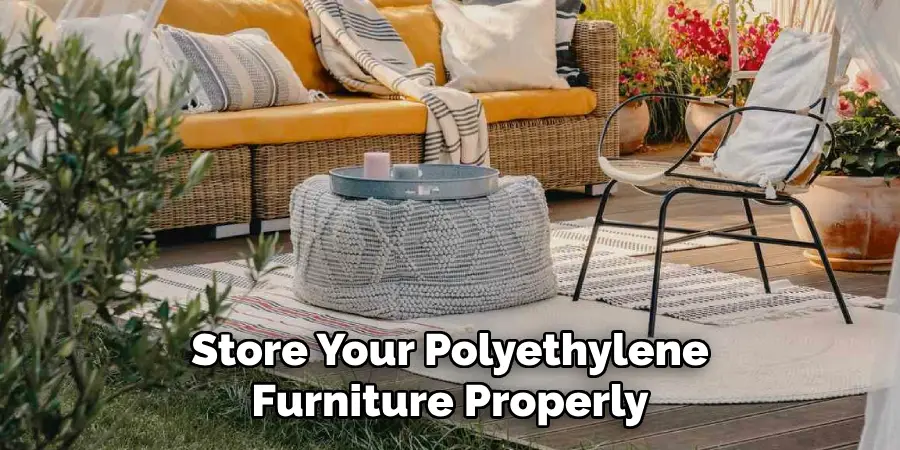
By following these simple steps for cleaning and maintaining your polyethylene furniture, you can keep it looking its best for years. Remember to dust and wipe down your furniture regularly, protect it from sun damage and extreme weather conditions, and store it properly during the off-season.
5 Additional Tips and Tricks
- Use Keyboard Shortcuts: Simplify your workflow by mastering keyboard shortcuts for your most-used commands. It not only boosts productivity but also reduces the strain on the hands.
- Keep Updated: Technology evolves at a rapid pace. Keep your software and applications updated to the latest version for new features and security enhancements.
- Back-Up Your Data Regularly: Data loss can be disastrous. Make it a habit to back up your important files and documents regularly on an external hard drive or a cloud service.
- Stay Safe Online: Be aware of potential cybersecurity threats. Never download files or click on links from unknown sources. Use strong, unique passwords for all your accounts.
- Learn Basic Troubleshooting: Understanding basic troubleshooting can save you time and money. Simple fixes like restarting your device or checking your internet connection often solve common tech problems.

With these additional tips and tricks, you can become a more efficient and savvy tech user. Remember always to prioritize your safety and security while using technology, and continuously strive to improve your skills by staying updated with the latest advancements.
5 Things You Should Avoid
- Avoid Multitasking: Although it may seem like a productive strategy, research suggests multitasking can lead to mistakes and decreased productivity. Try to focus on one task at a time for optimal results.
- Don’t Ignore Software Updates: Outdated software can leave your devices vulnerable to cyber threats. Ensure your operating systems and applications are updated with the latest security patches.
- Avoid Using Public Wi-Fi for Sensitive Transactions: Public Wi-Fi networks may not be secure, making them risky for transactions involving sensitive information such as credit card details or passwords.
- Don’t Neglect Privacy Settings: Review and adjust the privacy settings on your social media accounts and other online platforms to protect your personal information.
- Don’t Click on Suspicious Links: Phishing attempts often involve links that look legitimate but lead to malicious websites. Always verify the source before clicking on any links.
By avoiding these common mistakes, you can safeguard yourself and your devices from potential harm. Remember that prevention is always better than dealing with the consequences of a security breach or tech issue.

Conclusion
Everyone wants their furniture to look beautiful and clean, and it’s essential to keep polyethylene furniture looking great.
With the right know-how and regular maintenance and cleaning, you can ensure that your outdoor furniture not only looks fantastic but stays in top condition for many years to come. If you follow these steps, you should have no trouble maintaining your polyethylene furniture.
Hopefully, this guide has been helpful and informative, and you are now ready to tackle any dirt or grime that may come your way. Remember to practice suitable preventative measures when dealing with dirt and debris – try using a cloth cover to provide an extra layer of protection if possible. We hope this guide has helped teach you how to clean polyethylene furniture, so why not get started today?

